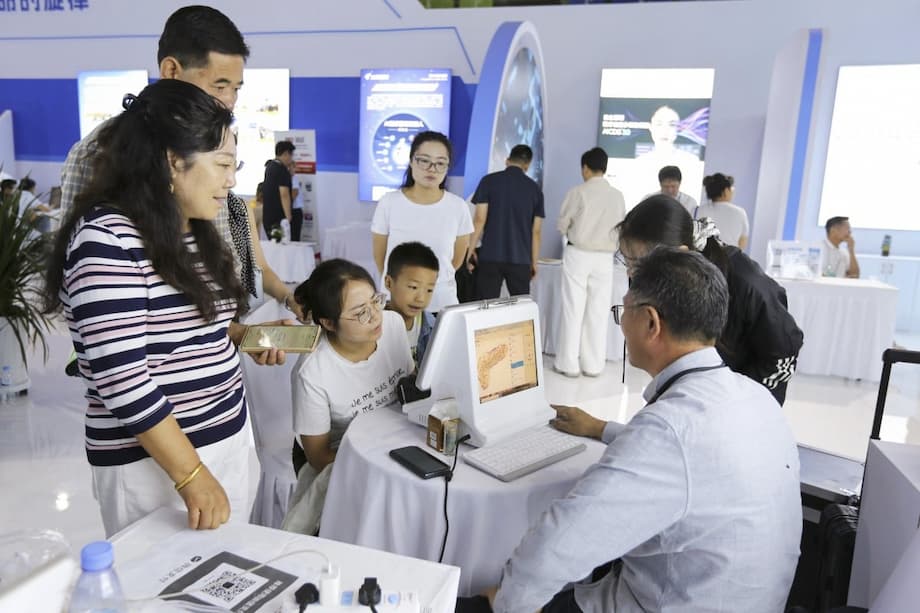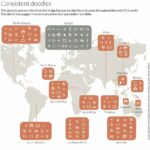Why services lead China’s latest consumption push
China is stepping up efforts to stimulate domestic demand with a new package of 19 measures that target service consumption in culture, sports, tourism and healthcare. The plan, issued by the Ministry of Commerce together with several other departments, aims to make it easier for private and foreign investors to enter key service sectors, improve the supply and quality of services, and lower financing costs for both providers and consumers. It also seeks to pull more visitors to the country by expanding visa free access and improving the experience for foreign travelers, while giving families more time to travel through potential adjustments to school holidays.
- Why services lead China’s latest consumption push
- What is in the 19 point package
- Tourism and visas: unlocking inbound demand
- Culture and sports as demand engines
- Healthcare opening: capacity, quality and investment
- The finance push behind consumption
- Pilot cities and how local governments will act
- Digital access and the role of connectivity
- Global backdrop: trade headwinds and policy friction
- Will these measures lift spending where it lags
- What to watch in the next 6 to 12 months
- The Bottom Line
The emphasis on services reflects where China sees the greatest room for growth. Physical goods spending surged over the past decade, but households face a weaker property market and a need for higher quality, experience driven consumption. Services also employ many small businesses, so a services push can support jobs. Officials are tying consumption goals to quality of life targets, from elderly care and community childcare to more cultural options after work hours. The signal is that services are no longer a side note, but a central driver of growth.
The measures arrive as policymakers try to counter soft consumer confidence and a stop start recovery. Price data in early 2025 reflected persistent disinflation pressure. Tourism and recreation have been a bright spot, especially during long holidays, yet the rebound has been uneven across regions and income levels. By targeting both supply and demand, Beijing is trying to make spending on services easier, more affordable and more appealing for a broad range of households.
What is in the 19 point package
Officials organized the measures into five themes that touch both market access and financing. Entry barriers will be lowered in sectors such as high quality medical services, leisure and vacation travel, culture and entertainment, and selected internet related services. The plan supports more international sports events and mass participation activities hosted by local governments. Museums and scenic sites are encouraged to extend operating hours, while cultural venues gain scope to trial new exhibition formats and retain related revenue for staff incentives, a step that can boost service quality and visitor experience.
To pull in more visitors from overseas, the government will expand unilateral visa waivers in an orderly manner and improve regional visa free entry policies. More eligible travelers will receive five year multiple entry visas. Authorities also want to make travel planning easier by improving payment options, accommodation registration and communication services for foreign visitors. On the domestic side, officials will explore adjustments to school holiday schedules, an unusual but pragmatic lever that can shift peak travel patterns and create more windows for families to spend on leisure.
Financing runs through the package. Banks will be guided to lend more to service providers and to the consumers who use them. Interest subsidies will lower borrowing costs in key areas, while a relending facility will channel central bank funds to eligible loans for service consumption and elderly care. The country will also use the central budget and local government special purpose bonds to support investment in cultural venues, tourism infrastructure, sports facilities, elderly care and childcare projects. The overall objective is to bring down the cost of capital for private and foreign investors that expand quality service supply.
The plan is structured to encourage local experimentation. Around 50 cities will be selected as pilots for new service consumption formats, and another group of cities will focus on boosting inbound consumption. Pilot status can speed administrative approvals and coordinate public investment with private projects, helping promising models scale faster across regions.
Tourism and visas: unlocking inbound demand
China has already seen momentum from recent visa waivers for selected countries and expanded direct flights. The new measures take the next step by widening the circle of visa free travelers and granting more five year multiple entry visas to eligible groups. Regional visa free policies will be improved to make cross border travel easier in key hubs, and tourism services will be upgraded, from airport transit to destination payments and language support.
Foreign visitors often run into two friction points, connectivity and payments. The policy package acknowledges both. Local authorities are instructed to improve access to mobile networks and public Wi Fi at transport nodes and tourist sites. Payments are a bigger hurdle, since many domestic merchants rely on QR code platforms linked to local bank accounts. Recent payment rule changes allow greater acceptance of foreign bank cards on mobile apps and at point of sale terminals. The new measures call for further optimization so that tourists can pay easily for transit, restaurants and tickets, which is critical to converting foot traffic into actual spending.
Inbound tourism feeds a long value chain. Hotels, transport, attractions, retail and dining all benefit when visitors stay longer and return more often. Extended museum and venue hours can spread demand across evenings and weekdays, easing crowding while lifting ticket and retail sales. Easing market entry in leisure and vacation services can also bring in international operators and new formats, raising competition and improving consumer choice.
Culture and sports as demand engines
Cultural services are being asked to do double duty, deliver better experiences and support wider consumption. The plan encourages more high quality creative works, film and performing arts, and it aims to channel existing funds toward productions that can draw larger audiences. Venues receive policy cover to trial new forms of exhibitions and events that can attract younger consumers and families.
Sports have a clear role. Authorities will invite more international events and support local governments in hosting mass sports activities. Large competitions draw visitors and sponsor spending, while community races, leagues and fitness events stimulate demand for travel, gear and services. The combination can lift both big city hospitality and smaller city businesses that host weekend activities.
Healthcare opening: capacity, quality and investment
Healthcare, especially mid to high end services, is a focus for opening and investment. The plan aims to cut red tape for private and foreign capital entering medical services, with an emphasis on quality and specialized care. Demographic trends point to rising demand for elderly care, rehabilitation, and chronic disease management. By lowering market access barriers and improving financing, officials want to build more capacity where waiting lists, travel distances or quality gaps hold back consumption.
Healthcare spending behaves differently from discretionary leisure. Households often delay elective services because of cost or convenience. Interest subsidies for service providers, paired with more consumer finance options, can smooth payments for exams, rehabilitation packages and wellness plans. The plan also links healthcare to inbound services, including international medical tourism and exhibitions, where China aims to improve standards and attract foreign participants.
The finance push behind consumption
Monetary and credit tools carry much of the weight. The central bank has launched a 500 billion yuan relending facility for service consumption and elderly care, allowing selected financial institutions to claim full relending against eligible loans. Officials have urged banks to expand credit for sectors such as catering, culture, tourism, education and household services, while tailoring products to the needs of small businesses and self employed workers.
Consumer finance is part of the mix. Interest subsidies for qualified personal consumption loans can lower borrowing costs for purchases like travel packages, home upgrades linked to age friendly renovations, and sports or cultural subscriptions. Auto finance companies are encouraged to support trade ins and flexible dealer financing to keep car related services healthy. Digital yuan pilots are being integrated into everyday transactions in some cities, though card based and mobile wallet payments will remain the primary rails for most consumers and visitors.
Credit data show gradual traction. Outstanding loans across major service consumption sectors reached 2.79 trillion yuan by the end of July 2025, up year on year, according to official briefings. Banks are also being asked to partner with retailers on promotions and to work with online commerce and livestream platforms to reach small merchants. The aim is to lift both the willingness and ability to spend.
Pilot cities and how local governments will act
Pilot cities matter because local governments control many practical levers that shape a consumer’s day. Transport hours, venue permits, street festivals, district renewal projects and payments infrastructure all sit with city agencies. With pilot status, cities can coordinate budgets for museum upgrades, district wide signage and translations, and payment terminals that accept both domestic wallets and foreign cards. They can also fast track permits for new leisure formats, from immersive exhibitions to outdoor fitness events.
Officials indicated that about 50 cities will be chosen to test new service consumption scenarios and formats. Another 15 or so will focus specifically on inbound consumption. Experiments can include bundled ticketing across attractions, late night cultural programs, family passes tied to adjusted school schedules, and one stop travel apps that integrate transit, venue booking and payments. If a model works, it can be rolled out quickly through provincial guidance.
Digital access and the role of connectivity
Digital connectivity is now a prerequisite for both domestic and inbound consumption. As financial inclusion and smartphone use expand, mobile payments, digital ticketing and online bookings remove frictions that used to deter spending. The World Bank tracks access and usage trends that shape these behaviors.
Introducing its 2025 database, the World Bank describes the value of linking connectivity and finance data. The institution notes the survey’s unique reach and a new lens on mobile access.
World Bank staff explain how this helps policymakers and businesses assess where digital infrastructure can unlock more consumption. Stronger connectivity at tourist sites, cultural venues and community sports facilities directly supports the goals set out in the 19 point plan.
The Global Findex Database is the world’s only demand-side survey on financial inclusion and a leading source of data on how adults around the world access and use financial services. The Global Findex 2025 introduces the Digital Connectivity Tracker, a new component that measures access to and use of mobile technology.
For foreign visitors, payment acceptance reforms aim to reduce declines at point of sale and failed app onboarding. Clearer guidance for small merchants, simpler fee structures for card acceptance, and wider QR code interoperability can raise conversion rates. For domestic users, better connectivity in smaller cities and age friendly interfaces can bring new groups into the service economy.
Global backdrop: trade headwinds and policy friction
China’s service consumption drive does not take place in a vacuum. External trade tensions affect earnings, investment and sentiment. In Europe, the European Commission adopted a measure under the International Procurement Instrument that restricts Chinese access to certain public tenders for medical devices. The Commission said the move responds to limited access for European suppliers in China’s public procurement market for the same goods.
The Commission set out the objective in formal language, explaining the scope for EU procurement authorities and entities. The regulation includes exceptions in cases of overriding public interest or lack of alternatives, and it is binding across all member states.
The European Commission has imposed an International Procurement Instrument measure that restricts the access of economic operators and medical devices originating in the People’s Republic of China to the European Union public procurement market for medical devices.
In the United States, tariff policy has become more restrictive as officials seek to reshape trade flows. In April 2025, the White House modified tariff schedules in response to announced retaliation by China and to encourage alignment by other partners. The order raised duty rates for imports from China and increased de minimis duties to curb circumvention.
The order itself referenced Beijing’s response and the timeline for new rates. These actions raise uncertainty around trade oriented earnings and can reinforce Beijing’s focus on building consumption at home.
On April 9, 2025, the PRC announced an 84 percent tariff on all U.S. goods, effective April 10, 2025.
Against this background, the domestic services push becomes both an economic and strategic choice. Stronger domestic demand can buffer external shocks. More inbound tourism and international events can also help rebuild person to person ties even when trade frictions persist.
Will these measures lift spending where it lags
The plan targets known pain points. Households often cite limited time, inconvenient opening hours, and a lack of mid priced, quality services outside top tier cities. Extending venue hours, encouraging regional events and improving intercity logistics can raise the share of weekends spent on leisure travel. Lower borrowing costs for service providers can improve facility quality and service consistency. Easing entry for private and foreign capital can raise competition and narrow quality gaps, especially in healthcare and education related services.
On the demand side, credit support and consumer campaigns can bring forward purchases without stoking excess leverage if lenders screen properly. Linking consumption promotion to welfare goals, such as elderly care and childcare, can deliver both improved services and a more stable base of spending. That linkage is a distinctive feature of the package. It uses service expansion to meet real needs, which can keep demand durable even if property or exports soften.
Execution will decide outcomes. Local governments face tight budgets, so interest subsidies and special purpose bonds must be targeted. Payment and visa reforms must work smoothly at the point of use. If a traveler’s card fails at a turnstile or a small merchant refuses to accept it, policy intent does not translate into spending. Training, clear fee schedules and hotlines can help.
What to watch in the next 6 to 12 months
Several indicators can show early traction. Inbound arrival numbers and average spending per visitor will reflect visa and payment reforms. Nighttime ticket sales at museums and cultural venues can track extended hours. Sports calendars should fill with more local mass participation events and selected international competitions. Healthcare opening can be monitored through new clinic approvals and capacity additions in rehabilitation and elderly care. On financing, watch uptake of the relending facility and bank lending to service firms, especially small operators.
Consumers also look for value and trust. High quality experiences, transparent pricing and reliable after sales service are as important as lower borrowing costs. Cities that balance crowd management with extended hours, improve signage and digital guides, and ensure payment acceptance will likely see faster gains.
The Bottom Line
- China released 19 measures focused on services, from culture and sports to tourism and healthcare, to boost domestic demand.
- Market access will be relaxed for private and foreign investors in key service sectors, with extended hours for museums and scenic sites.
- Inbound spending is a priority, with wider visa free entry, more five year multiple entry visas, and better payment options for visitors.
- Financing tools include interest subsidies, a 500 billion yuan relending facility, and support from central and local budgets for service infrastructure.
- About 50 pilot cities will test new consumption formats, with another group centered on inbound consumption.
- Digital connectivity and payment acceptance are central to raising conversion of tourist visits into spending.
- External headwinds persist, including EU procurement limits on Chinese medical devices and higher U.S. tariffs on imports from China.
- Early signals to monitor include inbound arrivals, nighttime venue sales, sports event calendars, healthcare capacity approvals, and bank lending to service providers.




